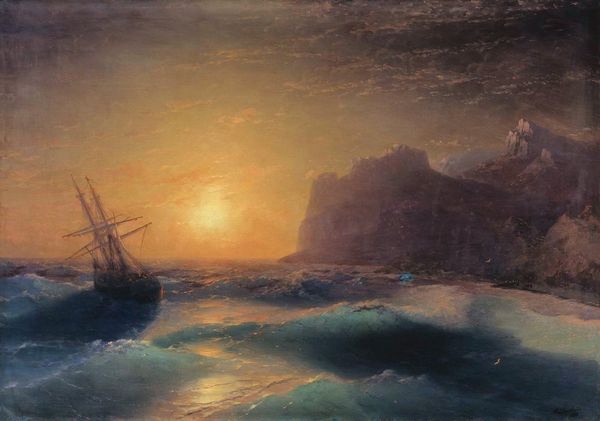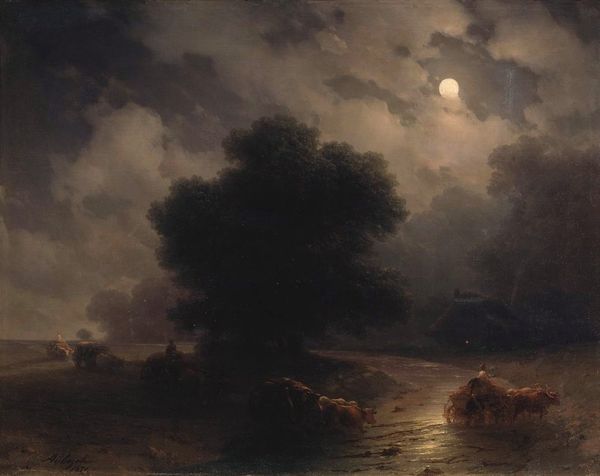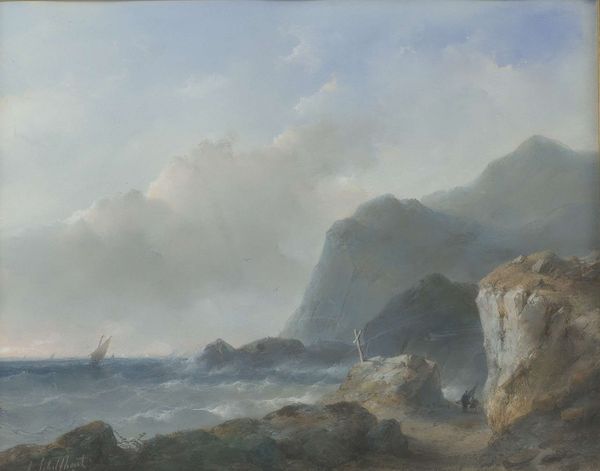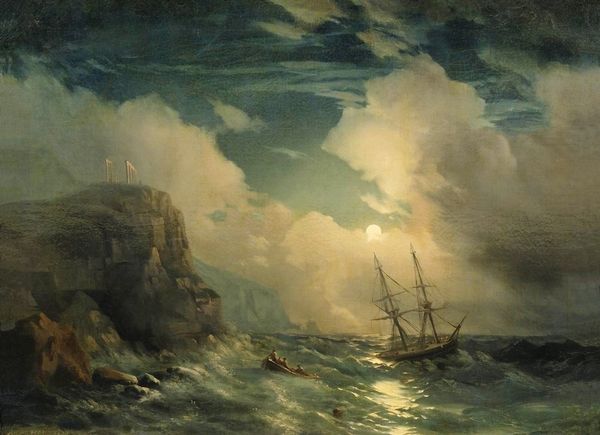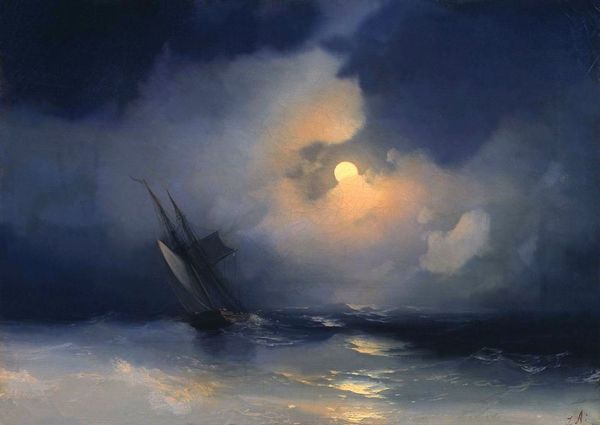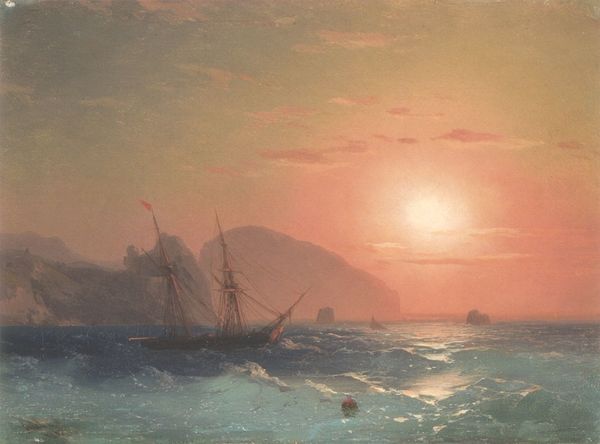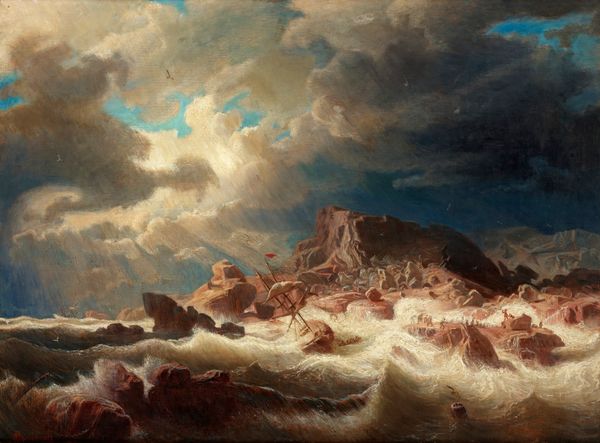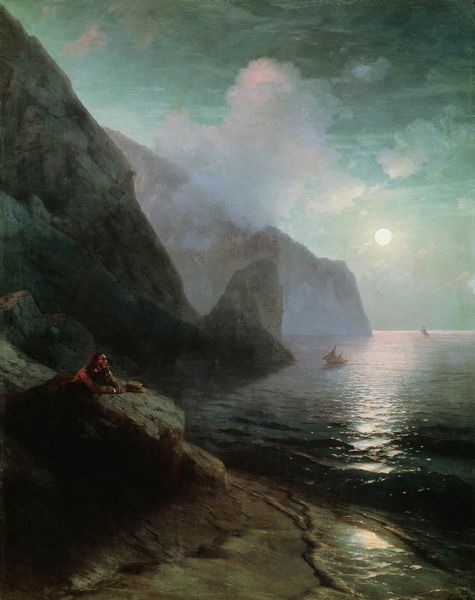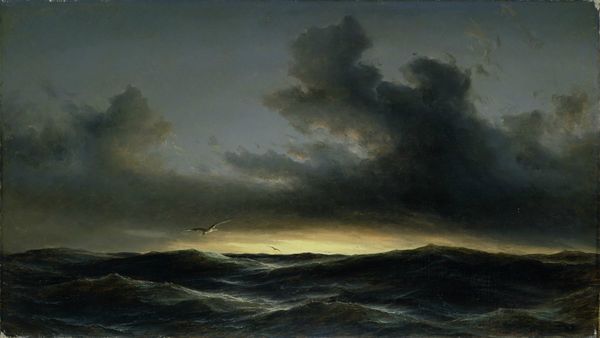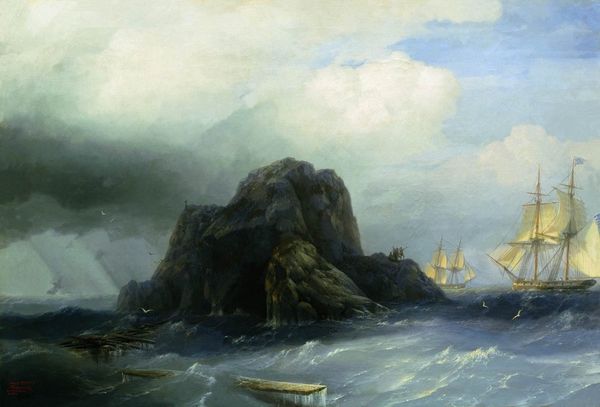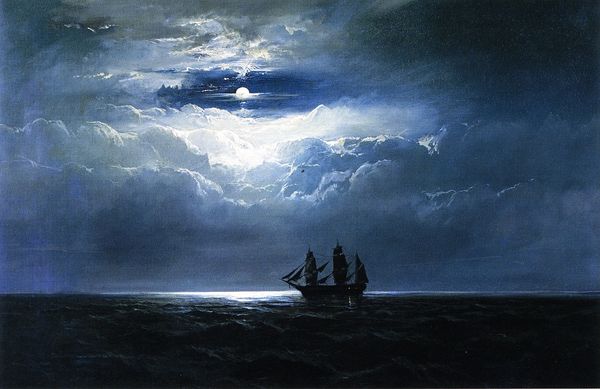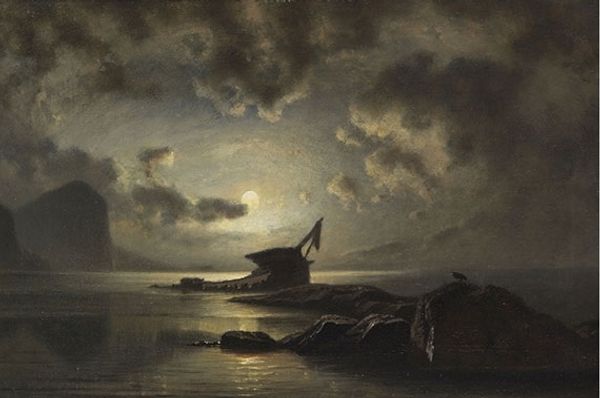
Dimensions: 116 x 190 cm
Copyright: Public domain
Editor: Here we have Aivazovsky’s “Island of Patmos,” painted in 1854 using oil paints. It’s dominated by this really turbulent sea under a dramatic, clouded moonlight. What jumps out to me is how theatrical and fraught with tension it feels. How do you interpret this work, especially considering its historical context? Curator: Well, let’s consider the role of Romanticism in 19th-century Russia. Aivazovsky, celebrated within court circles, produced these grandiose scenes which often served a didactic, even propagandistic purpose. Think about the symbolism: the sublime power of nature, but also, perhaps, a sense of Russia’s own imperial might reflected in the domination of the sea. Patmos itself holds religious significance; do you think Aivazovsky is leaning into the spiritual implications of depicting the island where John wrote the Book of Revelation? Editor: That's a great point! I hadn’t considered the dual role of the island – both as a place of spiritual revelation and now, a symbol embedded within the theatre of Russian Imperial power. It makes the painting far more layered. Curator: Precisely! How do you think the depiction of the turbulent sea contributes to this multifaceted understanding? The sea can signify both danger and the reach of the empire. It requires careful viewing and close attention to detail and cultural significance, so viewers aren't limited to just a pleasing surface. Editor: So it's not just a pretty picture; it's a statement about power and faith, very carefully constructed. I’ll definitely view it differently now. Thanks! Curator: And hopefully, think more critically about how we see these works on display within gallery spaces!
Comments
No comments
Be the first to comment and join the conversation on the ultimate creative platform.
